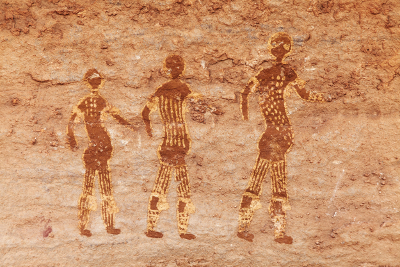The state of smart cities in MENA
11 December 2025
Published online 18 June 2015
Scientists believe they have identified Egypt as the ancient gateway for modern humans out of Africa.

© DPK-Photo / Alamy
Two routes have seemed plausible; a northern route from Egypt through Sinai and into Asia; and another southern route from Ethiopia across the Bab el Mandeb strait in the southernmost part of the Red Sea and into the Arabian Peninsula.
Using full genome sequencing an international team of researchers have come up with the first evidence to promote the northern route as the path for migration out of Africa. The group, from Europe, the US, Lebanon and Ethiopia, analysed the full genomes of 125 Ethiopians from five different ethnic populations and 100 Egyptian residents in Lebanon whose ancestry can be traced back for at least three generations.
They identified and then “masked” all genetic data likely to have been the result of more recent mingling with non-Africans, and they compared it to Eurasian genomes.
The Egyptian samples, rather than the Ethiopian ones, showed the most similarities with the Eurasians. Therefore, the northern Egyptian route would have been the one taken out of Africa, the researchers, led by geneticist Pierre Zalloua from the Lebanese American University, conclude.
“This is a very nicely designed study, the result of which solves a contradiction in data that has existed for several years,” says biological anthropologist Lisa Matisoo-Smith from New Zealand’s Otago School of Medical Sciences, an independent researcher also doing work on out-of-Africa migration.
Population geneticist Fernando Luis Mendez from Stanford University in the US says that the task was difficult because the data set with hundreds of genomes sequences of Ethiopian and Egyptian population is “great.”
Mendez is conducting separate research on the genetic intermingling of ancient human populations. While he praises the carefully sampled Ethiopian population data that revealed the level of genetic variation within a single African country as well as data relating to people of Egyptian descent from Lebanon, he cautioned that “this view is probably blurring some of the complexity of Egyptian population structure.”
He applauds the authors’ method of isolating different demographic events, but says it is unclear how much more complicated the picture will become as “we learn more about genetic variation in populations from the area,” he elaborates. “I believe it is still too early to have a clear idea of whether some of the crucial assumptions made by the authors are realistic”.
Zalloua says it would be useful to study the genetic diversity in Egypt in the future, as it has formed a major hub for population dispersal to and from Africa over several millennia.
“In my opinion, the diverse Egyptian population holds so many clues about our past that we still need to unravel,” he says, adding that using genetic data from Egyptian residents of Lebanon does not undermine the findings of this current study.
Matisoo-Smith agrees. “There isn’t a problem using Egyptians from Lebanon. The fact that it is an immigrant population means that they likely came from a range of locations in Egypt and therefore will provide a reasonable representation of a broad region in Egypt,” she says.
“This was the first study pinpointing key populations and suggesting genomic similarities between Egyptians and non-Africans,” says Zalloua. “The natural extension of the study is the use of other populations found along the path that modern humans took outside Africa, specifically looking at the Levantine populations.”
doi:10.1038/nmiddleeast.2015.101
Stay connected: